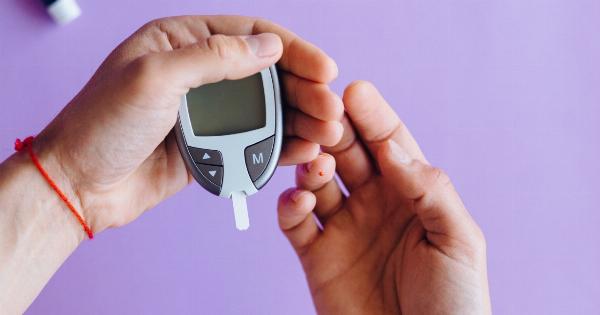Diabetes is a chronic condition characterized by high blood glucose levels. It requires careful management through a combination of medication, lifestyle changes, and diet.
One important dietary component that plays a crucial role in controlling blood glucose levels is dietary fiber.
What is Dietary Fiber?
Dietary fiber, also known as roughage, is the indigestible part of plant-based foods. Unlike other macronutrients such as carbohydrates, proteins, and fats, fiber is not broken down or absorbed by the body.
Instead, it passes through the digestive system largely intact.
Soluble Fiber and Insoluble Fiber
Dietary fiber can be categorized into two main types: soluble fiber and insoluble fiber. Soluble fiber dissolves in water and forms a gel-like substance in the digestive tract. It is found in foods such as oats, barley, legumes, apples, and citrus fruits.
Insoluble fiber, on the other hand, does not dissolve in water and adds bulk to the stool. It is commonly found in whole grains, nuts, and vegetables.
The Role of Dietary Fiber in Diabetes
Consuming an adequate amount of dietary fiber has several benefits for individuals with diabetes. One of the key advantages is its impact on blood glucose levels.
Soluble fiber, in particular, helps to slow down the absorption of glucose in the intestines, leading to a slower rise in blood sugar levels after a meal. This can help prevent spikes in blood glucose and promote better glycemic control.
Improving Insulin Sensitivity
Insulin is a hormone responsible for the regulation of blood glucose levels. In people with diabetes, either the body does not produce enough insulin (Type 1 diabetes) or the cells become resistant to its effects (Type 2 diabetes).
Studies have shown that a high-fiber diet can improve insulin sensitivity, making the cells more responsive to the hormone. This can help lower blood glucose levels and reduce the need for exogenous insulin or other diabetes medications.
Promoting Weight Management
Weight management is an essential aspect of diabetes management, especially for individuals with Type 2 diabetes. The consumption of dietary fiber can aid in weight loss and weight maintenance.
Fiber-rich foods tend to be more filling, causing individuals to eat fewer calories overall. Additionally, high-fiber foods often require more chewing, promoting a feeling of fullness and reducing the likelihood of overeating.
By incorporating fiber-rich foods into their diet, individuals with diabetes can better manage their weight and improve glycemic control.
Reducing Cardiovascular Risk Factors
Diabetes is associated with an increased risk of developing cardiovascular diseases such as heart disease and stroke. However, a diet high in fiber can help mitigate these risks.
Fiber has been shown to have a positive effect on several cardiovascular risk factors, including blood pressure, cholesterol levels, and inflammation. By improving these factors, individuals with diabetes can reduce their overall cardiovascular risk and improve their long-term health outcomes.
Implementing Fiber into the Diet
Increasing fiber intake can be achieved by incorporating a variety of fiber-rich foods into the diet. Some excellent sources of soluble fiber include oats, barley, legumes, fruits, and vegetables.
Insoluble fiber can be obtained from whole grains, nuts, seeds, and certain vegetables. It is important to note that increasing fiber intake should be done gradually to avoid digestive discomfort. It is also essential to drink an adequate amount of water when consuming fiber-rich foods to help prevent constipation.
Fiber Supplements
In some cases, individuals with diabetes may find it challenging to meet their daily fiber requirements through diet alone. In such instances, fiber supplements can be a useful addition.
These supplements typically come in the form of chewable tablets, capsules, or powders that can be mixed with water or food. It is important to consult a healthcare professional before starting any new supplements.
Monitoring Blood Glucose Levels
While dietary fiber plays a significant role in managing blood glucose levels, it is essential for individuals with diabetes to continue monitoring their blood sugar regularly.
This allows them to assess the impact of their dietary changes and make any necessary adjustments to their diabetes management plan in consultation with their healthcare team.
In Conclusion
Dietary fiber is a valuable component in the management of blood glucose levels in diabetes.
Its ability to slow down glucose absorption, improve insulin sensitivity, aid in weight management, and reduce cardiovascular risk factors makes it an essential part of a diabetes-friendly diet. By incorporating fiber-rich foods into their meals and consulting with healthcare professionals as needed, individuals with diabetes can better control their blood glucose levels and improve overall health.




























